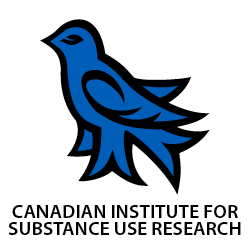Because a “just say no” kind of approach just doesn’t work
Once upon a time, I saw a cartoon that featured a teenager deciding what T-shirt to put on — one said “Just Do It!” and the other said “Just Say No!” This image, while humourous in some respects, prompted me, and no doubt other viewers, to reflect on the mixed signals young people face — and more importantly, what we (the “royal we”) can do to help them navigate this complex world successfully.
When it comes to substance-use education, mock car crashes and other fear-based tactics — while well-intentioned — achieve little in terms of promoting healthy behaviours and, worse, often limit if not prevent more meaningful opportunities for honest conversation about a behaviour that’s been around for thousands of years and remains steeped in today’s cultural practices.
What does show promise when it comes to helping youth avoid problematic substance use and generally thrive is a focus on helping young people develop the knowledge and skills (aka health literacy) they need in today’s world. But the question is, how do we do that? Enter iMinds, a series of learning resources developed for BC schools by the Centre for Addictions Research of BC in collaboration with school professionals and other partners.
These learning resources are designed to give young people an opportunity to:
- understand the long relationship between humans and drugs such as caffeine, tobacco, and alcohol
- analyze social and environmental influences related to drug use and other lifestyle choices
- extend their thinking by personalizing and explaining relationships among ideas and information related to drug use
- use a variety of communication skills to gather, evaluate and explain information and ideas related to successfully navigating a drug-using world
- describe strategies for attaining and maintaining physical, emotional and social health
In keeping with current education literature related to cross-curricular competencies and 21st century learning, iMinds helps teachers engage students in honest, thoughtful discussions and projects that involve issues relevant to their daily lives. Teachers, rather than needing to be “drug experts,” can do what teachers do best – create a context of enquiry that can lead to more meaningful and engaging learning.
Drawing on a social-ecological model, iMinds is based on the idea that awareness, actions, decisions and behaviours (including but not limited to substance use) are influenced by multiple factors, such as personal factors that require self-management skills, relationships requiring social skills, and the physical and cultural environment requiring navigational skills. By addressing all three areas, students develop healthy connectedness – a sense of autonomy and social belonging.
In addition to iMinds, CARBC has developed other resources for school professionals and their partners, including an app and related online learning resource related to drugs and driving. And since education, while important, is not sufficient, the Centre has also developed resources to support a comprehensive approach to promoting health and addressing substance use. For more, visit: http://www.carbc.ca/HelpingSchools.aspx.
Author: Cindy Andrew, Centre for Addictions Research of BC
**Please note that the material presented here does not necessarily imply endorsement or agreement by individuals at the Centre for Addictions Research of BC.


